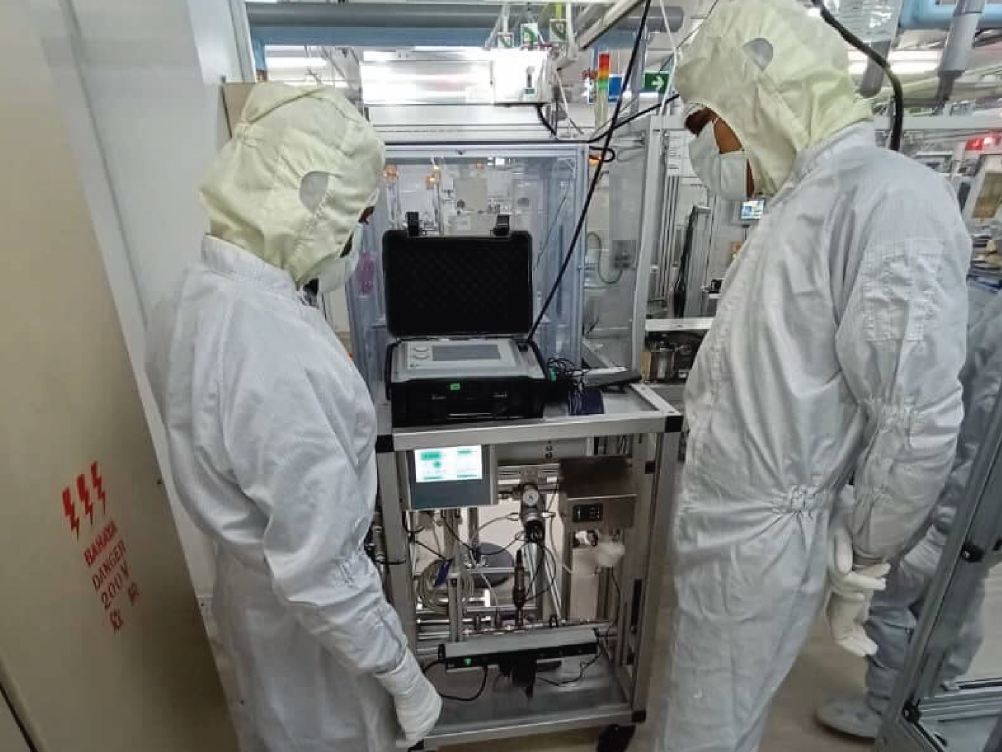

Compressed air is used in a wide variety of manufacturing and commercial applications, and in some industries the quality of the air is extremely important. Without efficient air treatment, compressor oil, pipe scale and airborne contaminates drawn in by the compressor intake, when mixed with moisture become a destructive cocktail that will ruin processes and plant, causing premature wear in any equipment with which it comes into contact.
A compressed air quality test is a standardized procedure used to ascertain the quality of the produced air. Compressed air testing determines that the compressed air being supplied to industrial processes is free of impurities. The contaminants routinely tested for are water, suspended particles, and oil residue generated from three major sources:
Compressed air is used in critical industrial processes where manufacturers strive to produce high-quality products. Considering the damage impurities can cause to equipment and final products in sensitive manufacturing processes, proper compressed air testing guidelines must be adhered to during all process cycles requiring compressed air usage.
If the compressed air system has not been designed for your industry specific requirements, it has potential to cause major problems to product quality and operating expenses. This is especially important for industries such as food & beverage, pharmaceutical, automotive and electronic if the air comes into direct contact with the product or indirect contact with the packaging.
ISO8573-1 contains air purity classification tables that will provide you with guidance that specifies the minimum air purity required at each usage point, based on the types of contaminants you may seek to remove: solid particulate, water and total oil.
Refer below table you can:
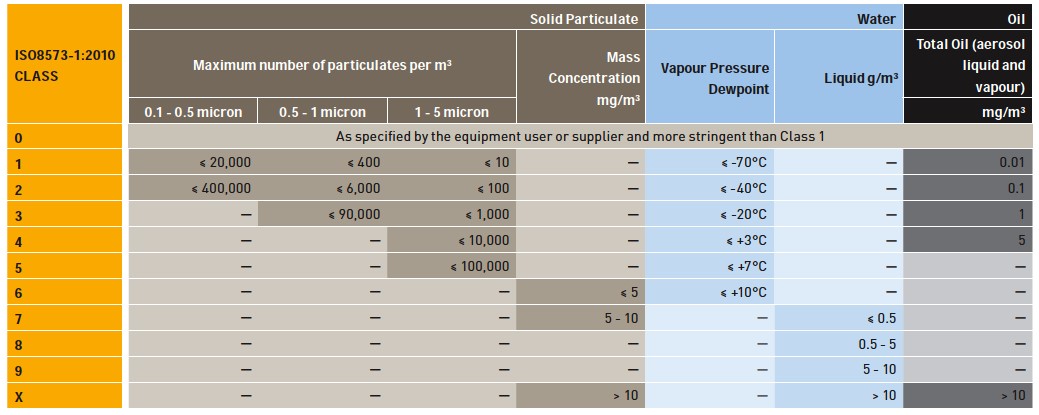
Below is an example of an air purity specification:
ISO8573-1:2010 Class 1:2:1
Based on table, this air purity specification would specify Class 1 particulate levels not to exceed 20,000 particles in the 0.1 to 0.5 micron size range, with additional levels at other particle sizes; Class 2 water levels identifying a pressure dewpoint (PDP) of -40 oC and Class 3 oil of no more than 0.01 mg of total oil.
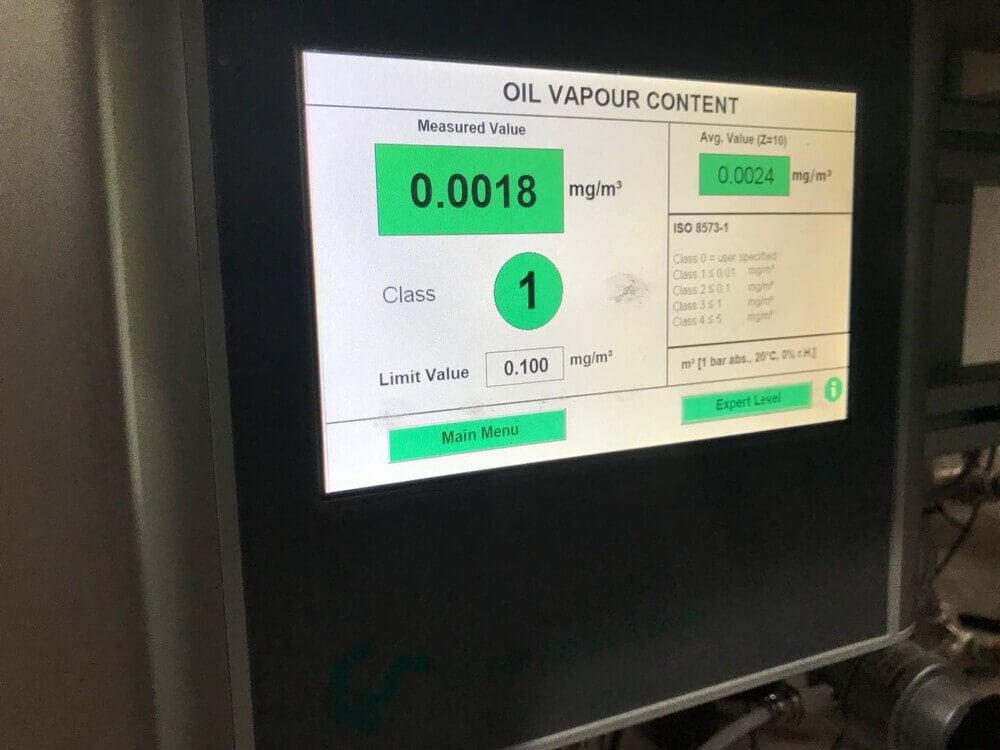
Oil Vapor Test
Testing air samples for oil residue detects the presence of undesirable hydrocarbons that might alter the results of sensitive industrial processes. Among the major oil impurities detected by standardized compressed air testing techniques are condensed and total hydrocarbons as well as oil vapor. These impurities usually originate from external sources such as lubrication used in compressor units and detected levels are measured in mg/m3.
Our Measuring Range:
<0.001 - 2.500 mg/m3
Particles Test
The laser particle counter can be used to rapidly sample multiple locations with on-site test results, and is therefore ideal for troubleshooting. The use of an Laser Particle Counter has played a crucial role in identifying the source of particle contamination from a variety of sources at some of our customers’ facilities. Contamination has been detected from O-rings in valves and filter housings, flexible tubing, distribution piping, and plastic or metal fittings.
Our Measuring Range:
0.1 to 0.5 um, 0.5 to 1.0 um and 1.0 to 5.0 um
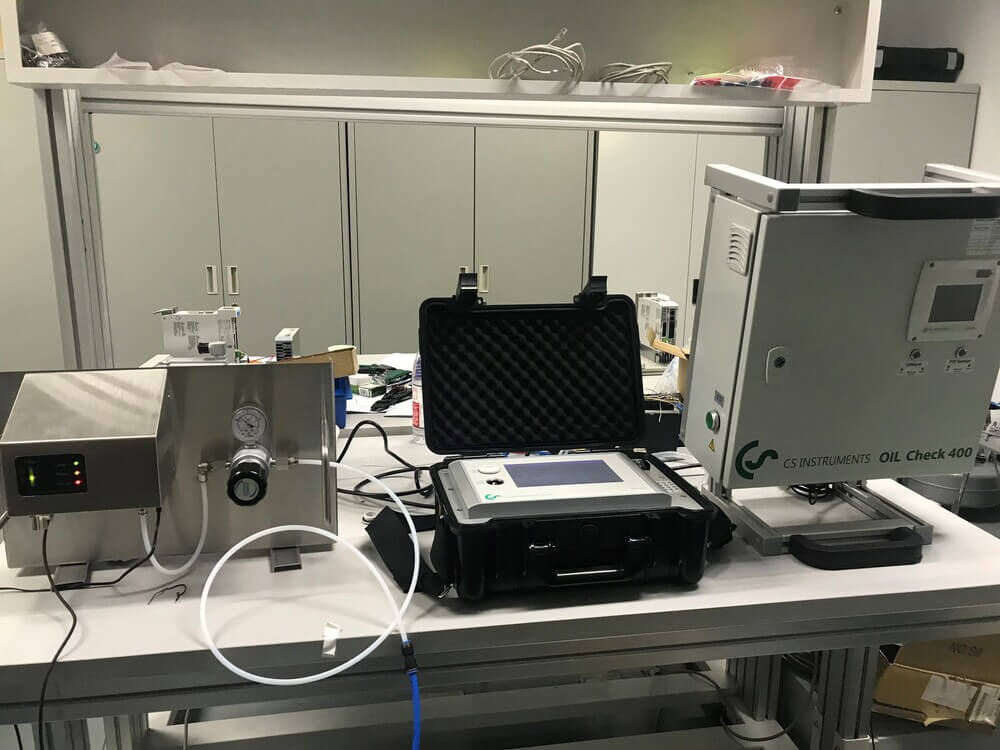
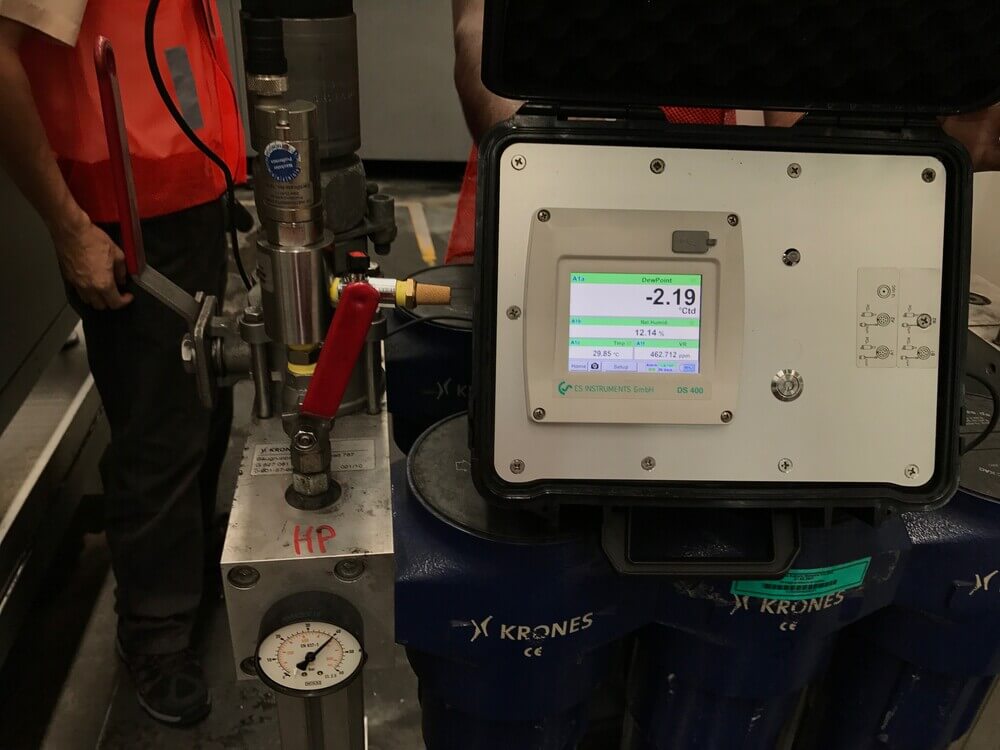
Dew Point Test
Compressed air system often has water contamination that can cause problems with downstream equipment or even contaminate finished product. Most commonly these moisture problems are caused by a hot environment (poor ventilation) in the compressor room. But sometimes the dryers fail, dryer controls go out of calibration or are inadvertently turned off by well-meaning operators.
Dew point measurement of compressed air systems can determine the water content level in your compressed air. Our instrumentation can measure pressure dew point on both refrigerated and desiccant dryer systems.
Measuring Range
-80 to +50 oCtd
The Objective of Air Quality Testing:
Testing Parameters
